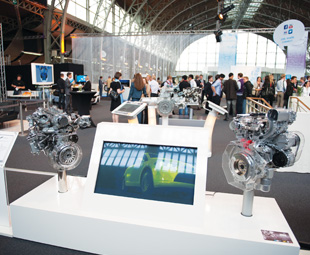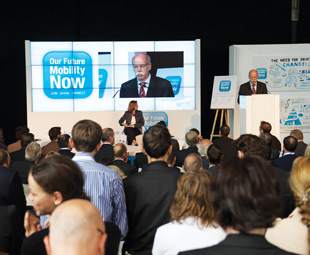Taking the bull by the horns

With environmental and natural resource pressures escalating, the world’s future mobility has come under the spotlight. GAVIN MYERS learns how the leaders of tomorrow are tackling the situation today.
Many decades ago, young entrepreneurs across Europe – such as Carl Benz, the Renault brothers or Ferdinand Porsche – advanced an invention that gave people not only individual mobility, but the social and economic mobility that comes with it. “That’s why it is important today to ask the next generation for their view of the future of mobility and transport and to have them heard by the European policy makers,” says Dieter Zetsche, head of Daimler AG and president of European Automobile Manufacturers’ Association (ACEA).
And that is exactly what the ACEA aims to achieve with the “Our Future Mobility Now” campaign: 16 major European car, truck and bus makers, through their trade association ACEA, together invited young adults from across Europe to share with them their ideas and thoughts about the future of transport and mobility. It seeks to give today’s youth a voice about how to move people and goods in an increasingly fast-paced, connected and global world and respond to environmental, societal and economic challenges at the same time.
 “This is a milestone year for our industry: We’re celebrating the 125th anniversary of the car and the tremendous opportunities for the personal freedom, economic development and mobility it enabled,” says Zetsche. “This project is designed to give the next generation of young Europeans a voice in reinventing mobility for the future.” Undoubtedly, it is a project that deserves to succeed.
“This is a milestone year for our industry: We’re celebrating the 125th anniversary of the car and the tremendous opportunities for the personal freedom, economic development and mobility it enabled,” says Zetsche. “This project is designed to give the next generation of young Europeans a voice in reinventing mobility for the future.” Undoubtedly, it is a project that deserves to succeed.
The project started in mid-May, with an online competition where young Europeans were urged to submit their ideas. Over six weeks more than 250 entries were submitted. Vast ideas were put forward, such as the designing of “intelligent” roads and the integration of social media into vehicles, to a shift from car ownership to car usage, or from fossil fuels to electricity. An improtant aspect forming part of many applicants’ entries also explored the efficient use of commercial and public transport, and the future of mobility in urban communities.
Eventually, 45 delegates aged between 18 and 30 years, were selected to participate. They came from 15 countries across Europe, securing their participation by sharing persuasive views on a number of questions: how do you imagine mobility to be in about 15 years from now; what could or should commercial transportation look like; and what role will the transportation industries play in our communities? Following the honour of being chosen, the delegates met with eight of the 16 major automobile manufacturer CEOs, as well as various members of the European Parliament and three EU commissioners during the summit at the Autoworld Museum in Brussels in June. The event was also held in close co-operation with the EU “Youth on the Move” project that promotes mobility in education and training throughout Europe.
“From the entries received, we saw that the younger generation is focused on greener energies, technological developments, and the growing importance of public transport in future societies. It is intriguing to see how these thoughts have evolved through the exchange and interaction with each other and with the leaders currently facing the challenges of bringing these changes to market,” says Ignacio Salinas from the think-tank Think Young and member of the competition selection committee.
It was here, among a setting of workshops, idea labs and an interactive exhibition, that the participants were able to compile their “Book of Ideas”. This was then presented to European commissioners, MEPs, and CEOs of Europe’s largest car, truck and bus manufacturers. The event also included debate sessions.
 Importantly, this event marked the launch of “a continuous dialogue with the next generation of young Europeans”. In total, over 500 participants took part, including a significant number of young employees who have just started a career in the automobile industry, as well as young officials working in the EU Commission and the European Parliament.
Importantly, this event marked the launch of “a continuous dialogue with the next generation of young Europeans”. In total, over 500 participants took part, including a significant number of young employees who have just started a career in the automobile industry, as well as young officials working in the EU Commission and the European Parliament.
A touch-and-feel exhibition also featured throughout the programme, providing a sneak peek on new developments in connectivity, manufacturing and skills, infrastructure, technology and concepts that will shape mobility in the years to come.
The automobile industry is key to Europe’s economy and society, providing direct employment to more than 2,2 million people and indirectly supporting another 10 million jobs. The sector is also the largest private investor in research and development.
It is no surprise then, that the major players recognise the importance of projects such as Our Future Mobility Now. Hopefully, they have set an example for the rest of the world to follow.
Published by
Focus on Transport
focusmagsa



